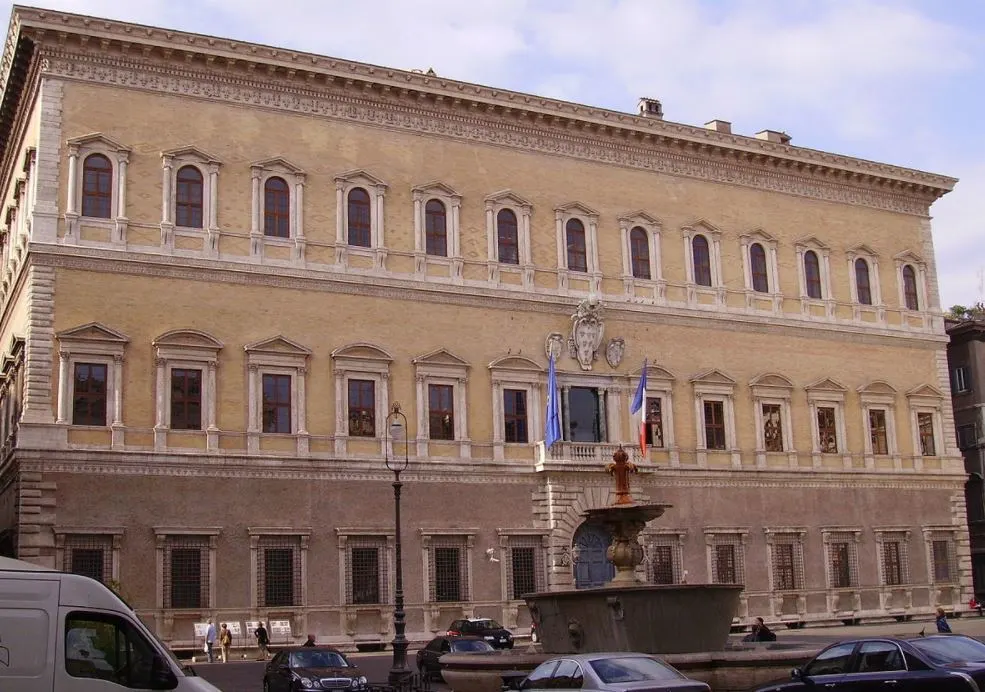Did you know that the French Embassy in Italy is located in one of the most magnificent palaces in the country’s capital?
In this post, you’ll discover some interesting facts about the Palazzo Farnese, a palace with a remarkable history and one of the most fascinating buildings in Rome!
1. The palace is located in the heart of Rome
The Palazzo Farnese is one of the most remarkable palaces in all of Rome. It’s considered to be the epitome of High Renaissance architecture and is located on the square with the same name, the Piazza Farnese.
It’s located right in the historical heart of Rome on the east bank of the Tiber River. The back of the palace and its garden even face the river so it’s really nearby.
The Mausoleum of Hadrian, better known as the Castel Sant’Angelo is located less than a kilometer (0.6 miles) to the north-northwest at the point that the Tiber River curves to the east. The Roman Forum, with all its historical monuments, and the Roman Colosseum, is situated a similar distance to the east-southeast.
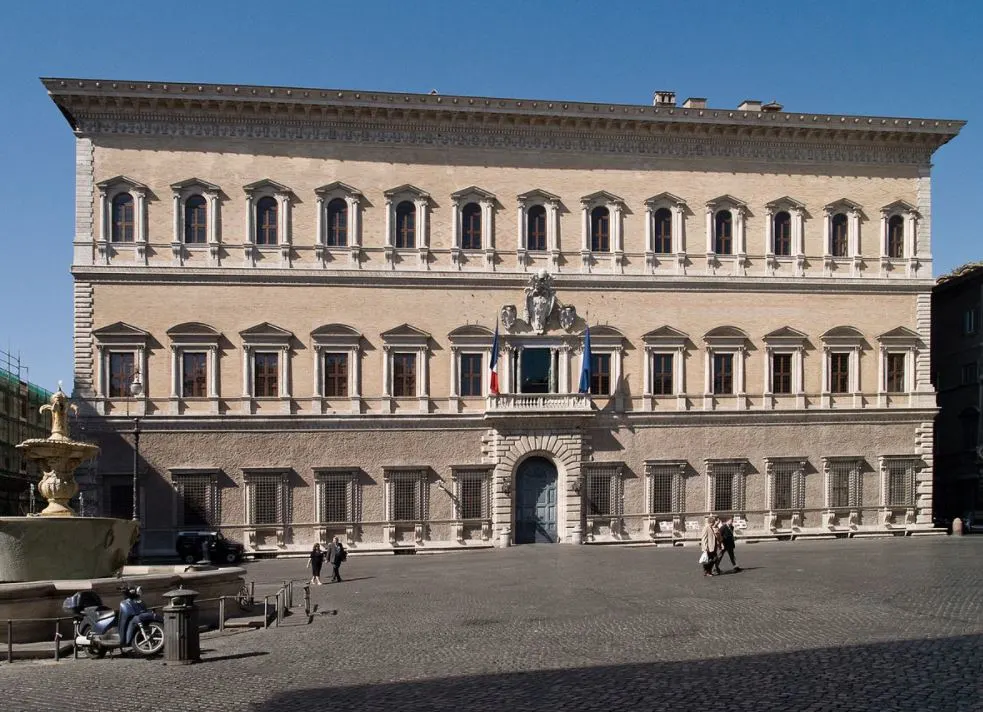
2. Construction of the palace started in the year 1515
The construction of the palace started at the high point of the Late Renaissance, a period in which Leonardo da Vinci, Michelangelo, and Raphael (to name a few) were working on various masterpieces in Rome simultaneously. Many of these famous works of art can now be admired at the Vatican Museums nearby.
The palace was commissioned by the Farnese family around the year 1515, more particularly Alessandro Farnese, a man who had become Cardinal in the year 1493 at the age of 25 and who was determined to grow the family’s power in Rome.

3. Some of the most notable Renaissance architects worked on their design
The original structure was designed by Antonio da Sangallo the Younger (1484-1546), a renowned Renaissance architect who most notably helped Donato Bramante with his winning design of the St. Peter’s Basilica in the early 16th century. He even became the chief architect of the largest and most famous church in the world in the 1520s.
Construction gradually moved forward but was briefly halted during the Sack of Rome in 1527, an event which saw mutinous troops of the Holy Roman Emperor looted the city of Rome until the Pope paid a ransom to get them out.

It wasn’t until the year 1534 that one of the most renowned artists of the Renaissance was hired to finish the palace. It’s fair to conclude that Michelangelo finished the job in style as it has been described as “one of the most imposing Italian palaces of the 16th century!”
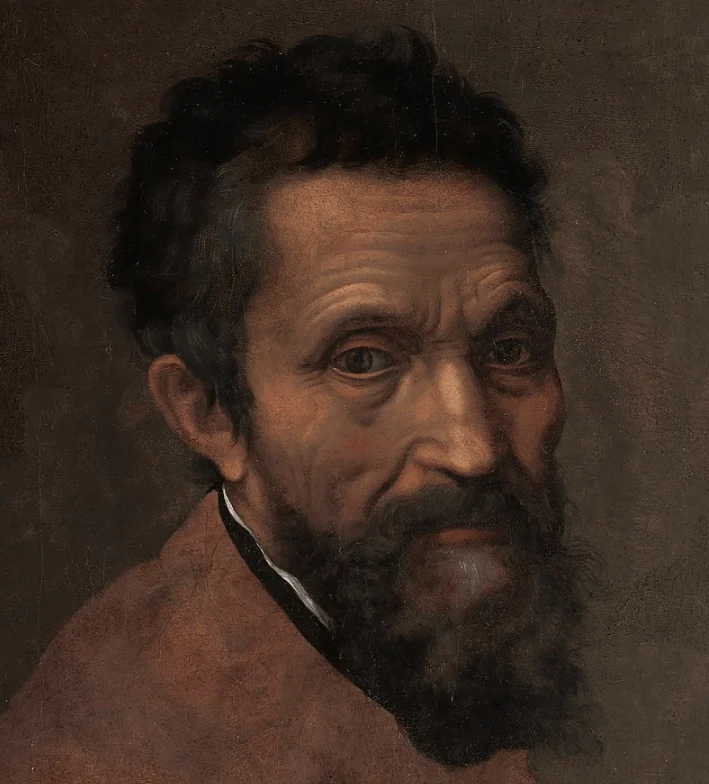
4. It wasn’t until a special event that the palace was expanded significantly
So why was Michelangelo hired to expand the palace with a third floor and finish its design?
The year 1534 was the year that Cardinal Alessandro Farnese was made Pope Paul III. The power-hungry new Pope hired some of the most renowned architects available to emphasize the power of the Farnese family.
The Palazzo Farnese was far from the only structure that was built shortly after he became pope. Another prime example is the Villa Farnese, an immense structure located about 50 kilometers (30 miles) outside of Rome.
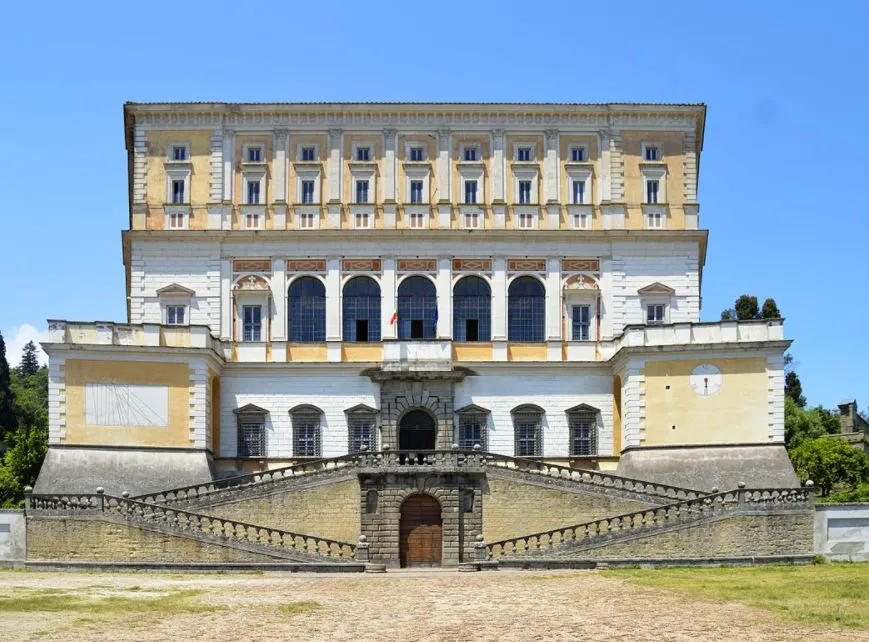
5. The central window features the largest papal coat-of-arms in Rome
One of the most notable elements added by Michelangelo to the façade of the palace is the central window. This window has a balcony and was designed in such a way that it becomes the focal point of the entire façade of the building.
That was obviously the idea of the Pope who wanted to make a grandiose appearance whenever he showed himself to the public below. This notion is further highlighted by the largest coat-of-arms with papal tiara located within the city of Rome, right above the head of where Pope Paul III made his entrance.

6. The basins in front of the palace used to be bathtubs of ancient Romans
The bathtubs located in front of the palace on the Piazza Farnese aren’t part of it, but it’s worth mentioning that these aren’t contemporary design elements.
During the time that the palace was constructed in the 16th century, these granite pools were moved to the square from the Baths of Caracalla. These bathtubs are actual pools that were used at this ancient Roman entertainment facility!
The people of ancient Rome were fond of their public baths, or “thermae,” and often took a dip in one of these. These have been remodeled and turned into amazing fountains to decorate the city until today, pretty amazing!

7. The façade facing the Tiber was completed in the late 16th century
The opposite side of the Tiber River features another structure built by the Farnese family called the “Villa Farnesina.” It’s assumed that Michelangelo had plans to build a bridge connecting the two properties but this plan was eventually shelved.
The side of the palace facing the river was eventually completed by the nephew of Pope Paul III named Ranuccio Farnese in 1589. The design features porticos and was completed by architect Giacomo della Porta, a man who designed the cupola of St. Peter’s Basilica around the same time!
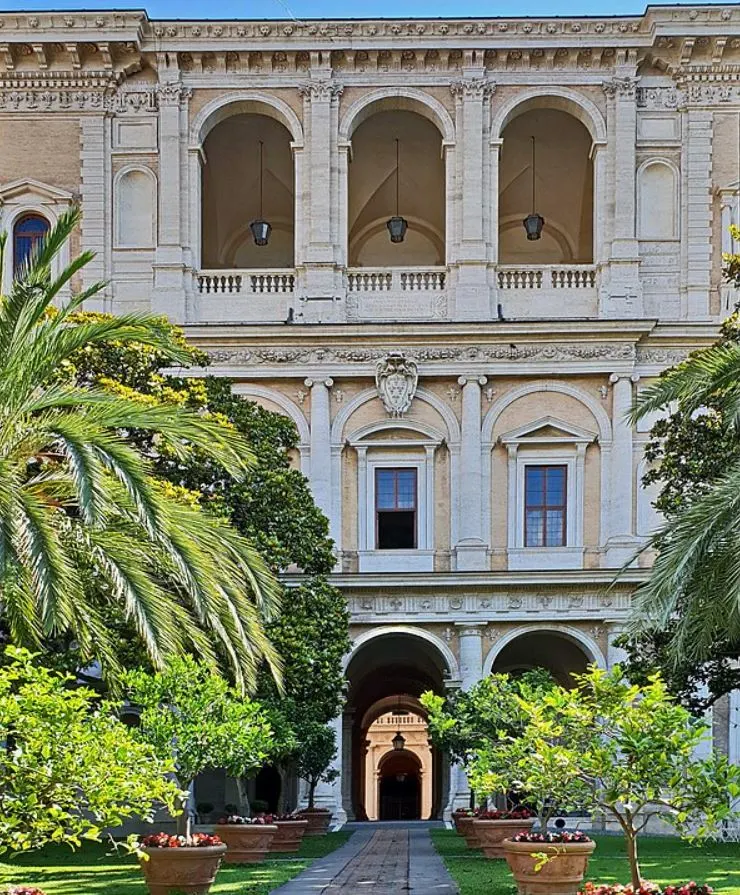
8. Allowing Christina of Sweden to stay at the palace wasn’t the best idea
During the second quarter of the 17th century, after the death of Pope Paul III’s second son Odoardo Farnese, the palace ended up uninhabited for about 2 decades.
The next Pope named Alexander VII allowed Christina of Sweden to briefly stay at the palace. That wasn’t the best idea because just a few months later, the palace was completely dilapidated and various works of art were stolen.
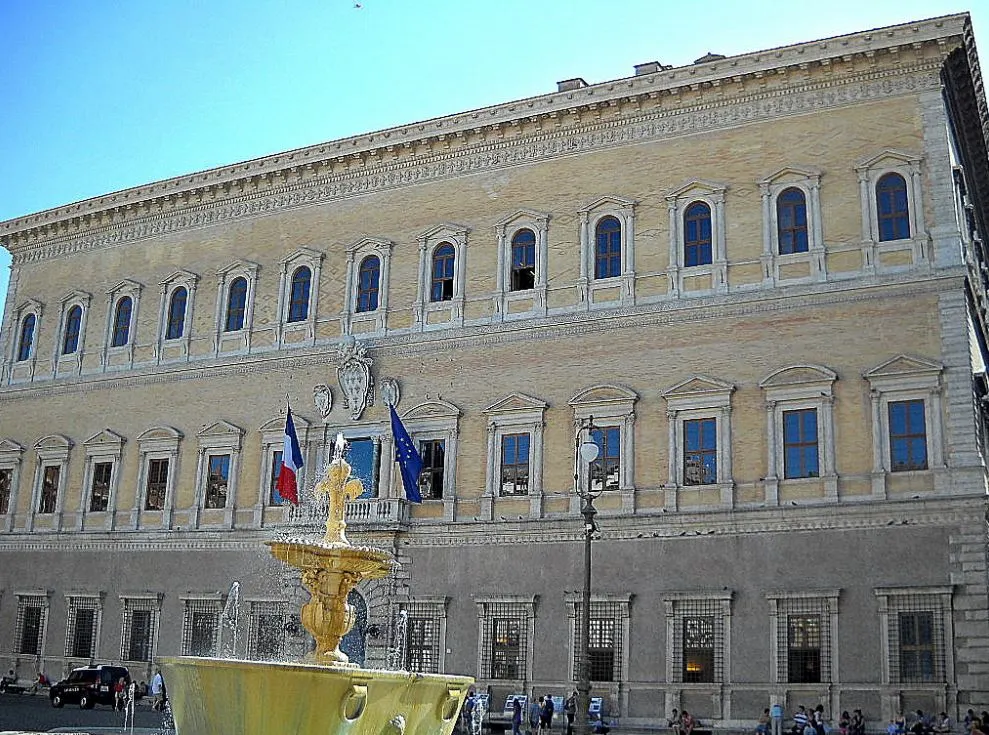
9. Many of the palace’s rooms feature magnificent frescoes
Apart from its remarkable design and magnificent architectural elements, the palace also houses some of the finest works of art in the world. Most of the Farnese collection has been moved to the National Archaeological Museum of Naples (sculptures) and the Capodimonte Museum in Naples, so most of the works are frescoes painted on the walls and ceilings.
Some of the most notable works are the “Hercules cycle” in the “Sala d’Ercole” (Hercules room) and “The Loves of the Gods” (1597–1608) in the “Farnese Gallery.” Both these wonderful works were painted by Bolognese painter Annibale Carracci (1560-1609).
These aren’t the only frescoes in the palace, though, because multiple other rooms have been decorated by some of the most renowned artists of the time, most notably Mannerist artist Daniele da Volterra (1509-1566).
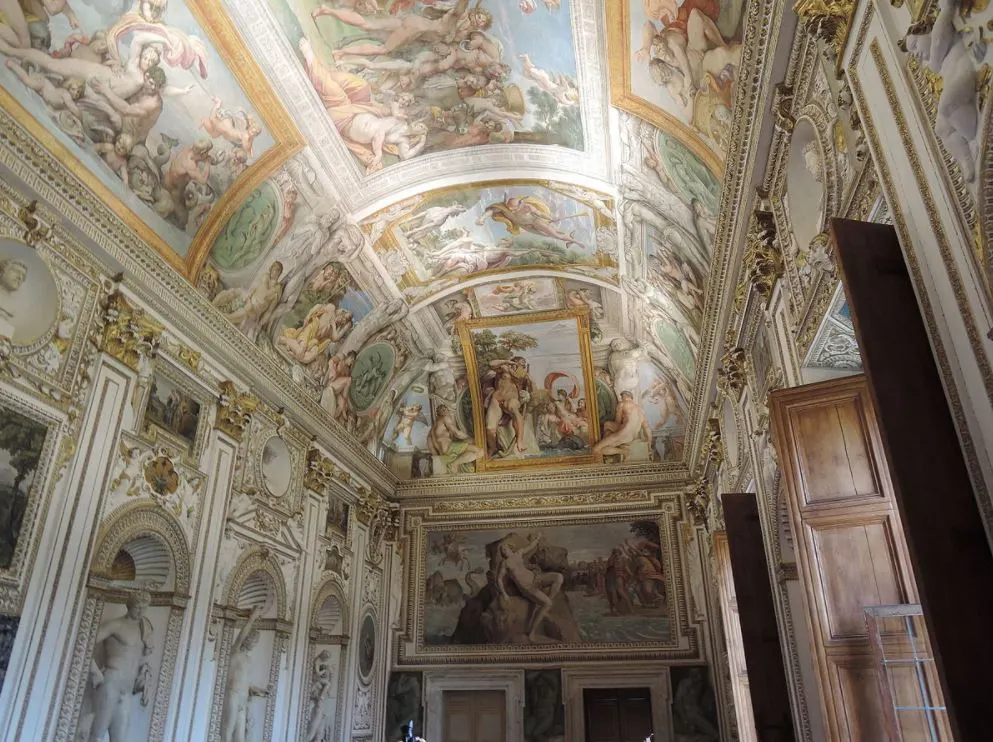
10. The palace was once home to countless famous sculptures
The members of the Farnese family were avid art collectors, and this resulted in a massive collection of contemporary and antique art, now located at the museums in Naples.
One of the most famous sculptures in this collection used to decorate the Hercules Room at the palace and was therefore referred to as the “Farnese Hercules,” a statue dating back to the 3rd century A.D.
Another famous work from antiquity is the so-called “Farnese Bull,” widely considered to be the largest ancient sculpture ever recovered. It’s assumed it dates back to the Severan Period (A.D. 222-235) and Michelangelo restored it in the 16th century. He also planned to decorate the garden between the Palazzo Farnese and the Villa Farnesina with it.
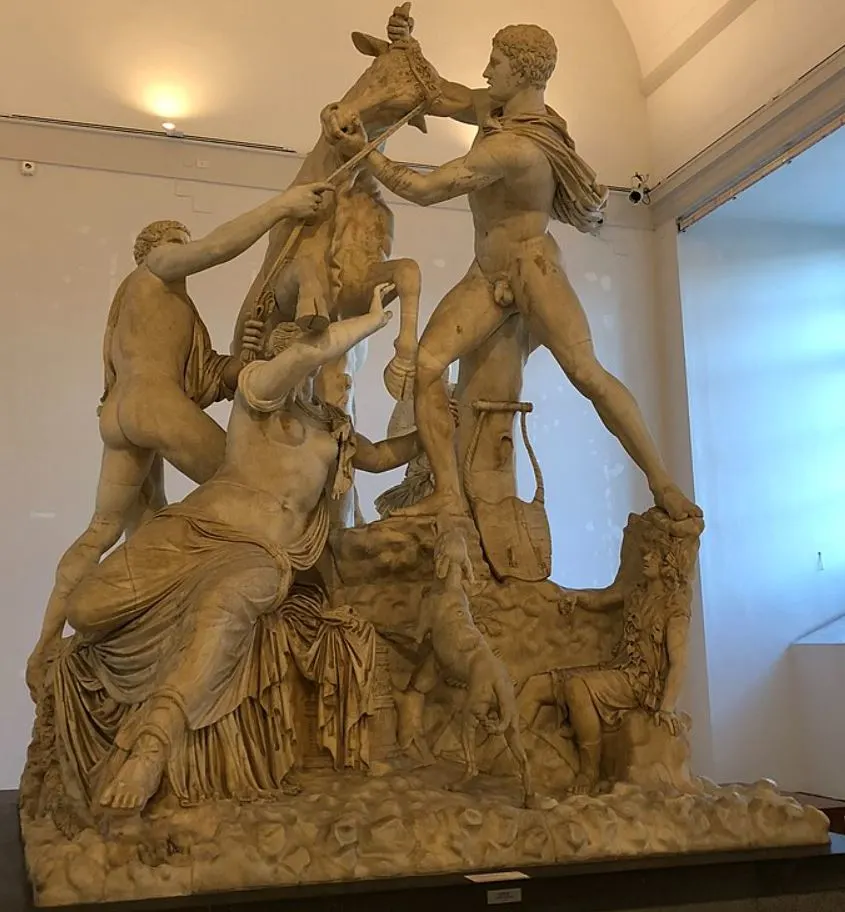
11. Numerous buildings all around the world were modeled on their design
The design of the palace has served as a form of inspiration for numerous architects all around the world. Some of the buildings that were modeled on its design include:
- Detroit Athletic Club in Detroit, Michigan
- Château Grimaldi near Aix-en-Provence, France
- National Building Museum in Washington, D.C., USA
- Chief Secretary’s Building in Sydney, Australia
- Banco di Roma in Alexandria, Egypt
- Royal Palace, Stockholm, Sweden
We also know that the architect of the Palace of Westminster, Sir Charles Barry, was a huge fan of its design so he used elements of its design for a building in London called the “Reform Club.”

12. The palace is leased by the French Embassy for 1 euro per month
After the last member of the Farnese family passed away, the palace was inherited by the House of Bourbon who were the Kings of Naples. The French Government purchased the palace from them in 1874.
After Mussolini seized the palace in 1936, the French Embassy was allowed to stay as they simply lease the building for a symbolic euro every month, a small price to pay for such a magnificent structure!
